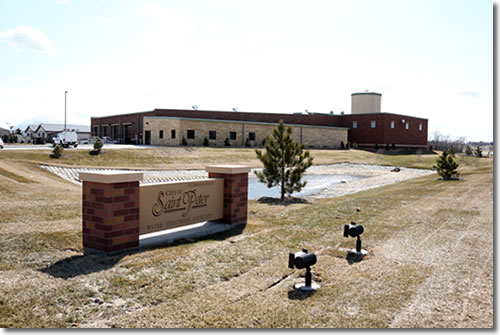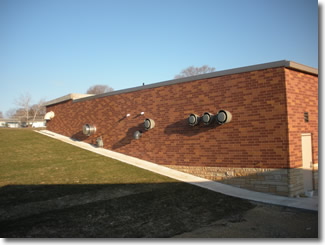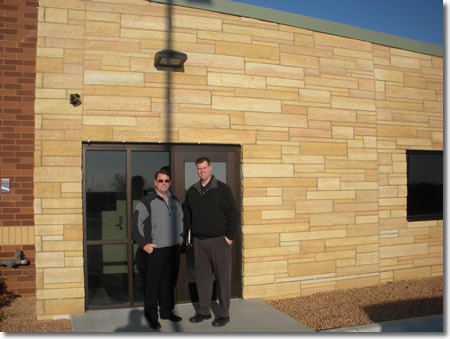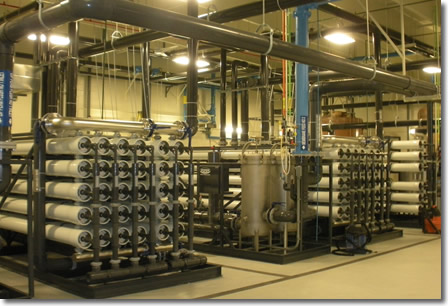Drinking Water Protection
- Drinking Water Protection Home
- About Us
- A-Z Index of Contaminants in Water
- Community Public Water Supply
- Drinking Water Grants and Loans
- Drinking Water Institute
- Drinking Water in Schools and Child Cares
- Drinking Water Revolving Fund
- Laws and Rules
- Noncommunity Public Water Supply
- Source Water Protection
- Water Operator and Certification Training
- Drinking Water Protection Contacts
Related Topics
- Annual Reports
- Drinking Water Risk Communication Toolkit
- Drinking Water Protection External Resources
- Fact Sheets
- Forms
- Invisible Heroes Videos: Minnesota's Drinking Water Providers
- Noncom Notes Newsletter
- Sample Collection Procedures (videos, pictures, written instructions)
- Waterline Newsletter
Related Sites
- 10 States Standards
- Clean Water Fund
- Health Risk Assessment – Guidance Values and Standards for Water
- Minnesota Well Index
- Water and Health
- Wells and Borings
Environmental Health Division
Saint Peter Adds Reverse Osmosis as Part of Expansion and Upgrade
From the Summer 2011 Waterline
Quarterly Newsletter of the Minnesota Department of Health Public Water Supply Unit, Waterline
A complete list of feature stories can be found on the Waterline webpage.
 |
| The new Broadway Avenue plant. |
The south-central Minnesota city of Saint Peter came close to being the capital of the state in the 1850s. Before Minnesota achieved statehood, the territorial legislature passed a bill to transfer the capital from St. Paul to Saint Peter. However, a member of the body, a fur trader named Joe Rolette, disappeared with the bill and remained hidden until just before the legislature adjourned, too late for the governor to sign the law.
The capital stayed in St. Paul as Minnesota became a state, but a few years later Saint Peter became home to the state hospital for the insane. Many Minnesotans think Saint Peter got the better end of the deal. For many years, the institution, the Saint Peter Regional Treatment Unit, had its own water supply, but in 2003 the wells serving the treatment center experienced trouble and the treatment center connected to the city’s public water supply. In addition, the city has experienced a steady population growth along with the addition of commercial customers as well as three long-term care facilities.
A 2006 water master plan indicated a need to expand the water system’s capacity. Saint Peter has been using seven wells, ranging in depth from 130 to 750 feet, that draw water from the Jordan, Franconia-Ironton-Galesville (FIG), and Mt. Simon-Hinckley aquifers. The wells fed two iron-and-manganese treatment plants, the Jefferson plant, built in 1949, and the Saint Julien plant, which was constructed in 1988.
The planned upgrade included the sealing of two multi-aquifer wells and the drilling of four new wells, two into the Mt. Simon-Hinckley aquifer, one into the Jordan, and one into the FIG aquifer. It became clear that, upon evaluation of the water quality from these formations, the utility would need to upgrade its treatment process, as well.
Pete Moulton, the water utilities superintendent for Saint Peter Public Works, said that the levels of nitrate found in the well drilled into the Jordan aquifer were double the levels from the two existing Jordan wells. Blending with water from other wells might not be enough to keep the nitrate in the finished water from exceeding the federal limit of 10 parts per million.
An engineering study performed with Bolton & Menk, Inc. of Mankato, Minnesota, also indicated that expanding the existing filtration plants would not be sufficient. Instead, the city decided to construct a new facility on Broadway Avenue with gravity and membrane (reverse-osmosis) filtration and to modify the Saint Julien plant with the addition of reverse-osmosis treatment. In addition, plans were made to demolish the Jefferson plant. “We found that adding on to the western edge [of the city with the Broadway Avenue plant] gave us the most flexibility,” said Moulton.
  |
| The soon-to-be demolished Jefferson Avenue plant is on the left. On the right is the new building, housing the reverse-osmosis filters, at the Saint Julien plant. |
Kris Swanson, a principal engineer with Bolton & Menk, said that the new wells varied in quality and quantity depending on the aquifer. The two into the Mt. Simon yielded a large amount of water but also iron and manganese, radium (gross alpha), chloride, and sulfate levels. The FIG aquifer, which had a smaller yield, also contained dissolved solids, iron, and manganese. The well in the Jordan aquifer, also with limited yield, was low in iron and manganese but contained the higher level of nitrate.
“We were trying to balance all those parameters,” said Swanson in explaining why the city decided to go with reverse osmosis. “Otherwise, we’re trying to balance the blending of wells with a number of different constituents and flow that aren’t easy to match.”
As was the case with the Jefferson and Saint Julien plants, water from the wells goes into separate plants and is blended in the distribution system. Approximately 85 percent of the water goes through the reverse-osmosis membranes. “The water quality will be the same regardless of which wells they’re using,” said Swanson, adding that in the past, the utility couldn’t blend the water without affecting the quality if it took a well out of service for repair or basic maintenance.
The gravity-filtration stage at the Broadway Avenue plant has a capacity of 2,100 gallons per minute (gpm) and consists of four concrete filter cells, each with a surface area of 225 square feet and each containing a 15-inch layer of anthracite filter media on top of a 15-inch layer of manganese greensand filter media.
The reverse-osmosis stage consists of spiral-wound thin film composite membranes contained within pressure vessels arranged on three skids. Two of the skids receive 925 gpm of gravity-filtered water from a clearwell and produce a treated permeate water flow of 650 gpm. The third skid receives 550 gallons per minute of concentrate water from the other two skids and produces a permeate water flow of 275 gpm. The total membrane permeate water flow of 1,575 is blended with the remaining 250 gpm of gravity-filtered water that was not pumped to the membrane system, resulting in a total finished water flow rate of 1,825 gallons per minute. Swanson said that the third skid, which recovers some of the rejected water, reduces the overall rejected water stream from 25 to 15 percent.
The reverse-osmosis system at the Saint Julien plant, which is in a building constructed adjacent to the existing plant, operates in a similar fashion. Two of the skids each produce 435 gallons of permeate water per minute, and the third skid produces 190 gallons of water per minute. The total 1,060 gallons of water per minute is blended with 150 gallons per minute of gravity-filtered water.
The Broadway Avenue plant also has a two-cell concrete clearwell totaling 290,000 gallons, a concrete backwash reclaim tank with three separate sections sized to contain 60,000 gallons, a 267,000 gallon wire-wound, pre-stressed concrete standpipe for the lower-system finished water storage, a 1,000 kilowatt diesel generator, and chemical-feed systems for gas chlorine, potassium permanganate, hydrofluorosilic acid, polyphosphate, antiscalant, sodium bisulfate, sulfuric acid, and sodium hydroxide.
The modifications to the Saint Julien plant included the replacement of some of the piping and the installation of chemical-feed systems similar to those at the Broadway Avenue plant in addition to a two-cell clearwell totaling more than 155,000 gallons.
The transmission and connection of water main for the city’s two pressure system consist of 95 lineal feet of 6-inch, 90 lineal feet of 8-inch, and 3,490 lineal feet of 12-inch ductile iron main.
 |
| Above: Pete Moulton and Kris Swanson outside the new Broadway Avenue plant. Below: Inside the plant are three skids of reverse-osmosis vessels. |
 |
Reverse osmosis was selected to deal with nitrate as well as radium, the two primary concerns, but a side benefit is that it also produces softer water. However, that was not good news to those who sell water conditioning equipment, and one dealer expressed his objections to the city and state, arguing that it was more efficient for residents to install and maintain their own softening systems than to have soft water produced by the city.
Moulton points out that the enhanced treatment was needed to deal with more than hardness. “We can’t produce water that doesn’t meet safe drinking water standards,” he said, adding, “We’d seen our city grow steadily by maintaining and upgrading our water and wastewater infrastructure. We get calls from industries asking if we are going to continue to be able to support them. Our answer is ‘Yes.’ This helps to entice business.”
Swanson added that issues with chloride made reverse osmosis an attractive option since residents with home softeners add salt, which could become a problem if chloride limits on wastewater discharge are adopted in the future. Swanson said that Saint Peter is being “pro-active, a good steward, and is protecting the Minnesota River.”
The total project cost was $18.8 million with some of the money coming through below-market loans through the drinking water revolving fund in addition to some grant money through the American Recovery and Reinvestment Act.
Construction on the Broadway Avenue plant began in September of 2009 and was completed in March of 2011. The Jefferson plant kept operating during this period, and the Saint Julien plant was also continued while the building to house the reverse-osmosis equipment was being constructed.
The project has increased the utility’s total capacity from 2 million to 3.3 million gallons per day to serve its 11,000 residents, which include students and staff at Gustavus Adolphus College. “Our design criteria was to meet our water needs to 2030,” said Moulton in explaining why they chose the system they did. “This gave us the most flexibility and one of the best water qualities in the state.”
Of Interest
Go to > top